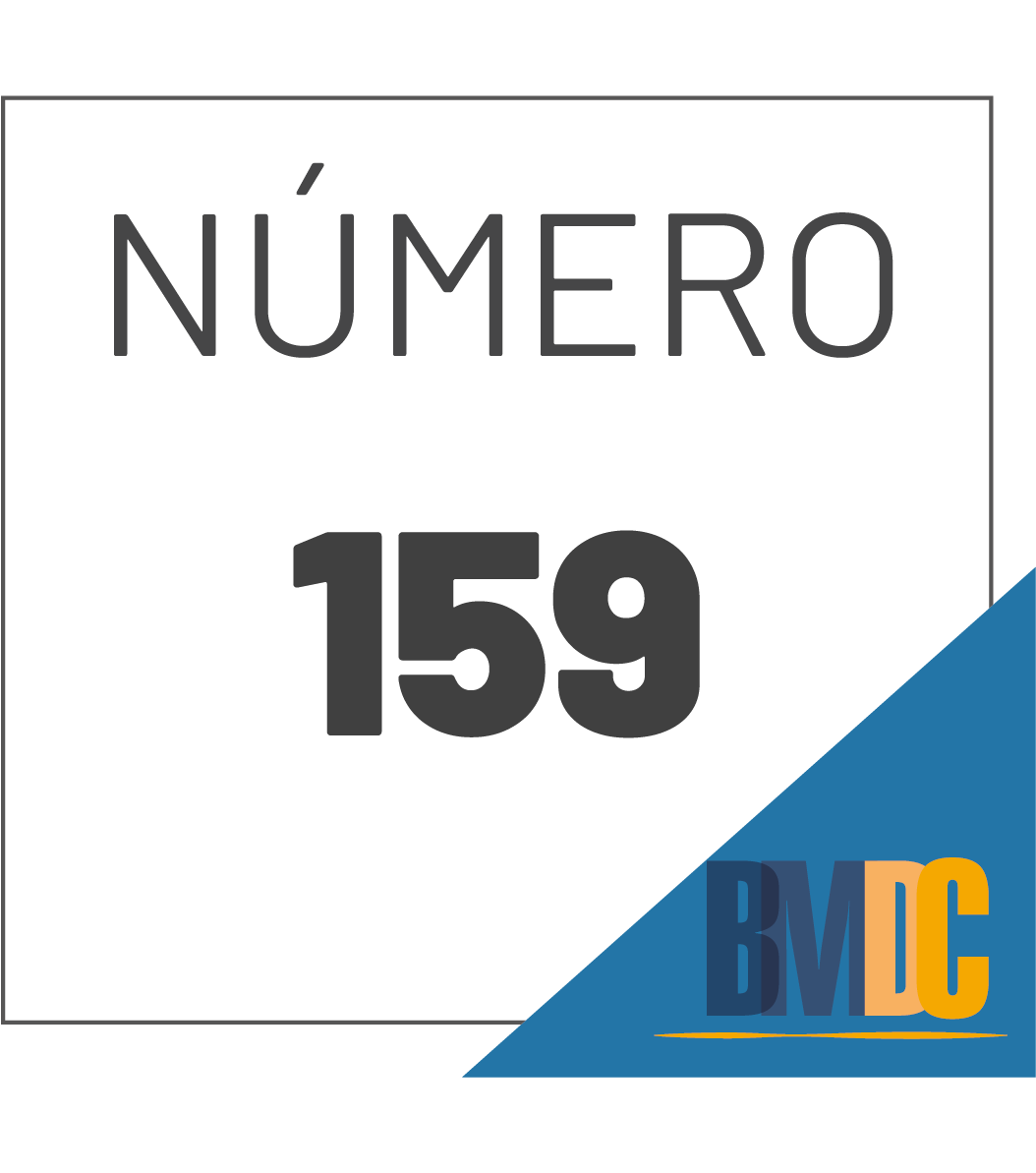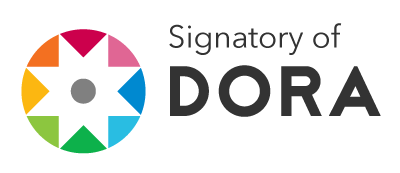Análisis comparado de la adopción de gobierno abierto en países de América Latina
Gobierno abierto (GA) es un concepto nuevo en el mundo, el cual propone escenarios conversacionales con el ciudadano y esto puede marcar una diferencia en la co-construcción de las democracias modernas. El objetivo de este artículo es analizar los avances de la implementación de políticas de GA en América Latina. Se trata de una investigación descriptiva comparativa basada en una revisión de literatura y en los planes de acción en GA de Brasil, Chile, Colombia, México y Uruguay. Los hallazgos muestran que existe un esfuerzo por generar modelos conversacionales, presentándose coincidencias en actividades orientadas a hacer transparente el manejo de recursos públicos y la apertura del poder judicial en el camino de construir una justicia abierta para superar crisis de confianza.
Detalles del artículo
Uso de licencias Creative Commons (CC)
Todos los textos publicados por el Boletín Mexicano de Derecho Comparado sin excepción, se distribuyen amparados con la licencia CC BY-NC 4.0 Internacional, que permite a terceros utilizar lo publicado, siempre que mencionen la autoría del trabajo y la primera publicación en esta revista. No se permite utilizar el material con fines comerciales.
Derechos de autoras o autores
De acuerdo con la legislación vigente de derechos de autor el Boletín Mexicano de Derecho Comparado reconoce y respeta el derecho moral de las autoras o autores, así como la titularidad del derecho patrimonial, el cual será transferido —de forma no exclusiva— al Boletín para permitir su difusión legal en acceso abierto.
Autoras o autores pueden realizar otros acuerdos contractuales independientes y adicionales para la distribución no exclusiva de la versión del artículo publicado en el Boletín Mexicano de Derecho Comparado (por ejemplo, incluirlo en un repositorio institucional o darlo a conocer en otros medios en papel o electrónicos), siempre que se indique clara y explícitamente que el trabajo se publicó por primera vez en este Boletín.
Para todo lo anterior, deben remitir la carta de transmisión de derechos patrimoniales de la primera publicación, debidamente requisitada y firmada por las autoras o autores. Este formato debe ser remitido en PDF a través de la plataforma OJS.
Derechos de lectoras o lectores
Con base en los principios de acceso abierto las lectoras o lectores de la revista tienen derecho a la libre lectura, impresión y distribución de los contenidos del Boletín por cualquier medio, de manera inmediata a la publicación en línea de los contenidos. El único requisito para esto es que siempre se indique clara y explícitamente que el trabajo se publicó por primera vez en el Boletín Mexicano de Derecho Comparado y se cite de manera correcta la fuente incluyendo el DOI correspondiente.

Esta obra está bajo una licencia internacional Creative Commons Atribución 4.0.
Citas
Alianza para el Gobierno Abierto. 2019. Informe global: Democracia más allá de las urnas electorales. Washington. Alianza para el Gobierno Abierto. https://www.opengovpartnership.org/wp-content/uploads/2019/05/Global-Report_Volume-1_ES.pdf.
Agencia de Gobierno Electrónico y Sociedad de la Información y del Conocimiento de Uruguay. 2018. Resumen Ejecutivo, Cuarto Plan de Acción de GA de Uruguay 2018-2020, Montevideo. Agencia de Gobierno electrónico y Sociedad de la Información y del Conocimiento de Uruguay.
Banco de la República de Colombia. 2015. Formas de gobierno. Bogotá. Subgerencia Cultural del Banco de la República. http://www.banrepcultural.org/blaavirtual/ayudadetareas/politica/formas_de_gobierno.
Blomgren, L. 2010. “Collaborative Governance: Emerging Practices and the Incomplete Legal Framework for Citizen and Stakeholder Voice”. Journal Of Dispute Resolution, vol. 2. https://www.researchgate.net/publication/228182348_Collaborative_Governance_Emerging_Practices_and_the_Incomplete_Legal_Framework_for_Citizen_and_Stakeholder_Voice.
Brasil. 2018. Cuarto Plan de Acción 2018-2020. Brasilia: Ministerio de Transparencia y Contraloría General de la Nación. http://live-ogp.pantheonsite.io/sites/default/files/Brazil_Action-Plan_2018-2020_POR.pdf.
Burégio, V., Kellyton, R., Neto, N., García, M. Vinícius. 2015. Towards government as a social machine, en WWW 2015 Companion-Proceedings of the 24th International Conference on World Wide Web. DOI: 10.1145/2740908.2743976.
Centro Latinoamericano de Administración para el Desarrollo. 2016. Carta Iberoamericana de Gobierno Abierto. https://www.funcionpublica.gov.co/eva/admon/files/empresas/ZW1wcmVzYV83 Ng==/archivos/1470417708_350c543cc190276e5a10618fd50a 3245.pdf.
Chaplow J. S., Beresford N. A., Barnett, C. L. 2015. “Post-Chernobyl surveys of radiocaesium in soil, vegetation, wildlife and fungi in Great Britain”. Earth System Science Data. https://doi.org/10.5194/essd-7-215-2015.
Chile. 2018. Cuarto Plan de Acción 2018-2020. Santiago de Chile. Ministerio Secretaría General de la presidencia. http://live-ogp.pantheonsite.io/sites/default/files/Chile_Action-Plan_2018-2020.pdf.
Colombia. 2017. Tercer Plan de Acción 2017-2019. Bogotá. Presidencia de la República. https://somosmas.org/aga/docs/III-Plan-Colombia_GobAb.pdf.
Comisión Económica para América Latina y el Caribe. 2018. Observatorio Regional de Planificación para el Desarrollo de América Latina y el Caribe. Santiago de Chile. CEPAL. https://observatorioplanificacion.cepal.org/es.
Concha, G. y Naser, A. 2012. El desafío hacia el GA en la hora de la igualdad. Santiago de Chile. CEPAL. https://www.cepal.org/es/publicaciones/3969-desafio-gobierno-abierto-la-hora-la-igualdad.
Congreso de la República de Colombia. 2014. Ley 1712 de 2014 de Transparencia y del derecho de acceso a la información pública nacional. Bogotá D. C. Imprenta Nacional.
Congreso General de los Estados Unidos Mexicanos. 2015. Ley General de Transparencia y Acceso a la Información Pública. México. Diario Oficial de la Federación. http://www.dof.gob.mx/nota_detalle.php?codigo=5391143&fecha=04/05/2015.
Congreso Nacional de Chile. 2008. Ley 20.285 de agosto de 2008, sobre Asociaciones y Participación Ciudadana en la Gestión Pública. Santiago, Chile. https://www.leychile.cl/Navegar?idNorma=276363.
Cucciniello, M., Porumbescu, G. y Grimmelikhuijsen, S. 2017. “25 Years of Transparency Research: Evidence and Future Directions”. Public Administration Review, vol. 77, Issue 1, enero-febrero, 32-44. https://doi.org/10.1111/puar.12685.
Da Silva Craveiro, G. y Albano, C. 2017. Open data intermediaries: coproduction in budget transparency, Transforming Government: People, Process and Policy. Emerald Group Publishing Ltd., 11(1), 119-131. DOI: 10.1108/TG-12-2015-0057.
Fox, J., Haight, L. y Palmer-Rubin, B. 2011. “Delivering transparency: To what degree does the Mexican government respond to public information requests? [Proporcionar transparencia hasta qué punto responde el gobierno Mexicano a las solicitudes de información pública?]”, Gestión y Política Publica, 20(1), 3-61. http://www.scopus.com/inward/record.url?eid=2-s2.0-82455246611&partnerID=40&md5=840f8ec481248e911f69d3e3005220b4.
Fung, A. 2013. “Infotopia: Unleashing the democratic power of transparency”. Politics and Society, 41(2), 183-212. DOI: 10.1177/003232 9213483107.
Gunawong, P. 2015. “Open Government and Social Media: A Focus on Transparency”. Social Science Computer Review. SAGE Publications Inc., 33(5), 587-598. DOI: 10.1177/0894439314560685.
Harrison, T. M. y Sayogo, D. S. 2013. Open Budgets and Open Government: Beyond Disclosure in Pursuit of Transparency, Participation and Accountability, Proceedings of the 14th Annual International Conference on Digital Government Research, 235. DOI: 10.1145/2479724.2479757.
Hernández Sampieri, R., Fernández Colado, C. y Baptista Luci, M. 2014. Metodología de la investigación. 6a. ed. Mexico. Mc Graw Hill.
Janssen, M. y Van den Hoven, J. 2015. “Big and Open Linked Data (BOLD) in government: A challenge to transparency and privacy?”. Government Information Quarterly. Elsevier Ltd, 32(4), 363-368. DOI: 10.1016/j.giq.2015.11.007.
Kassen, M. 2017. “Understanding transparency of government from a Nordic perspective: open government and open data movement as
a multidimensional collaborative phenomenon in Sweden”. Journal of Global Information Technology Management. Routledge, 20(4), 236-275. DOI: 10.1080/1097198X.2017.1388696.
Kreiss, D. 2015. “The Problem of Citizens: E-Democracy for Actually Existing Democracy”. Social Media + Society. DOI: 10.1177/2056305115616151.
Manfredi Sánchez, J. L., Herranz de la Casa, J. M. y Calvo Rubio, L. M. 2017. Transparency and Diplomacy: New social demands and professional routines”. Revista Latina de Comunicacion Social, 72, 832-848. DOI: 10.4185/RLCS-2017-1195.
Marjanovic, O. y Cecez-Kecmanovic, D. 2017. “Exploring the tension between transparency and datification effects of open government IS through the lens of Complex Adaptive Systems”. Journal of Strategic Information Systems, 26(3), 210-232. DOI: 10.1016/j.jsis.2017.07.001.
Meijer, A. J., Curtin, D. y Hillebrandt, M. 2012. “Open government: Connecting vision and voice”. International Review of Administrative Sciences, 78(1), 10-29. DOI: 10.1177/0020852311429533.
Mendieta, M. V. y Alonso, Á. I. 2017. “Developments in transparency in the spanish municipalities: An analytical revision of the last research”. Lex Localis. Institut za Lokalno Samoupravo in Javna Narocila Maribor, 15(3), 411-430. DOI: 10.4335/15.3.411-432(2017).
México. 2016. Tercer Plan de Acción 2016-2018. Ciudad de México. Secretariado Técnico tripartita. http://live-ogp.pantheonsite.io/sites/default/files/Mexico_Plan-de-Accion-2016-2018.pdf.
Naser, A. y Ramírez-Alujas, A. .2014a. Plan de Gobierno Abierto. Santiago de Chile. Naciones Unidas.
Naser, A., Ramírez-Alujas, Á. y Rosales, D. 2017. Desde el gobierno abierto al Estado abierto en América Latina y el Caribe. Edited by Comisión Económica para América Latina y el Caribe. Santiago. Naciones Unidas.
Ohemeng F. L. K., Ofosu-Adarkwa, K. 2015. “One way traffic: The open data initiative project and the need for an effective demand side initiative in Ghana”. Government Information Quarterly, vol. 32, Issue 4, 419-428. https://doi.org/10.1016/j.giq.2015.07.005.
Oviedo, E., Mazon, Zubcoff, J. 2015. “Quality and maturity model for open data portals”. Proceedings-2015 41st Latin American Computing Conference. DOI: 10.1109/CLEI.2015.7360011.
Oztoprak, A. A. y Ruijer, E. 2016. “Variants of transparency: an analysis of the English Local Government Transparency Code 2015”. Local Government Studies. Routledge, 42(4), 536-556. DOI: 10.1080/03003930.2016.1154845.
Piotrowski, S. J. 2017. The “Open Government Reform” Movement: The Case of the Open Government Partnership and U.S. Transparency Policies”. American Review of Public Administration. SAGE Publications Inc., 47(2), 155-171. DOI: 10.1177/0275074016676575.
Presidencia de la República Brasil. 2011. Lei no 12.527, de 18 de novembro de 2011-Dados da Norma - Portal Câmara dos Deputados. http://www2.camara.leg.br/legin/fed/lei/2011/lei-12527-18-novembro-2011-611802-norma-pl.html.
Presidencia de la República de Chile. 2012. Instructivo Presidencial sobre Gobierno Abierto 005-2012, 1-5. http://www.guiadigital.gob.cl/sites/default/fi les/gab.pres_.ndeg005.pdf.
Presidencia de la República de Chile. 2014. Instructivo Presidencial de Participación Ciudadana 007-2014. Santiago, Chile. http://www.minjusticia.gob.cl/media/2015/05/Instructivo-Presidencial-sobre-Participación-Ciudadana.pdf.
Presidencia de la República de Colombia. 2015. Decreto 103 de 2015 Nivel Nacional. Bogotá D.C. http://www.alcaldiabogota.gov.co/sisjur/normas/Norma1.jsp?i=60556.
Qanbari, S., Rekabsaz, N., Dustdar, S. 2015. “Open Government Data as a Service (GoDaaS): Big Data Platform for Mobile App Developers, 2015”. 3rd International Conference on Future Internet of Things and Cloud. Roma, 398-403. DOI: 10.1109/FiCloud.2015.34.
Ramírez-Alujas, Á. 2012. “Gobierno abierto es la respuesta : ¿cuál era la pregunta?”. Más Poder Local, 14-22. https://dialnet.unirioja.es/servlet/articulo?codigo=4013852.
Reddick, C. G., Chatfield, A. T. y Puron-Cid, G. 2017. Online Budget Transparency Innovation in Government, 232-241. USA. Department of Public, Administration College of Public Policy. DOI: 10.1145/3085228.3085271.
Reggi, L. y Dawes, S. 2016. “Open Government Data Ecosystems: Linking Transparency for Innovation with Transparency for Participation and Accountability”. Electronic Government: 15th IFIP WG 8.5 International Conference, EGOV 2016, 1-15. DOI: 10.1007/BF03251472.
Sandoval-Almazán, Rodrigo. 2015. “Gobierno abierto y transparencia: construyendo un marco conceptualConvergencia”. Revista de Ciencias Sociales, vol. 22, núm. 68, 203-227. https://www.redalyc.org/pdf/105/10536227008.pdf.
Sanhueza, A. 2018. “Mecanismos de revisión independiente (MRI)”. Informe de avance de Chile, Santiago de Chile. https://www.opengovpartnership.org/wp-content/uploads/2018/10/Chile_Mid-Term_Report_2016-2018.pdf.
Schnell, S, y Which, S. 2019. “Countries Have More Open Governments? Assessing Structural Determinants of Openness”. The American Review of Public Administration, 49(8), 944-956. DOI:10.1177/0275074019854445.
Senado de la República Oriental del Uruguay. 2008. Ley 18.381 de Acceso a la Información Pública. Montevideo. http://archivo.presidencia.gub.uy/_web/leyes/2008/10/EC1028-00001.pdf.
Setiawati, C. I. y Pratiwi, P. M. 2015. “Conceptual model of citizen’s intention associated to e-government and internet behavior: Why do Bandung citizens follow the Mayor’s social media?”. 3rd International Conference on Information and Communication Technology (ICoICT), 336-341. DOI: 10.1109/ICoICT.2015.7231447.
Sieber, R. E., Johnson, P. A. 2015. “Civic open data at a crossroads: Dominant models and current challenges,”. Government Information Quarterly. https://doi.org/10.1016/j.giq.2015.05.003.
Stacey, P., Fons, G. y Bernardo, T. M. 2015. “An open ecosystem engagement strategy through the lens of global food safety [version 1; peer review: 2 approved]”. F1000Research 2015, 4, 129. https://doi.org/10.12688/f1000research.6123.1.
Thurston, A. 2015. “Access to Reliable Public Records as Evidence for Freedom of Information in Commonwealth Africa”. The Round Table, 104:6, 703-713. DOI: 10.1080/00358533.2015.1112095.
United Nations. 2018. Encuesta sobre E-Gobierno 2018. Nueva York. https://publicadministration.un.org/egovkb/Portals/egovkb/Documents/un/2018-Survey/E-Government Survey 2018_Spanish.pdf.
Uruguay. 2018. Cuarto Plan de Acción 2018-2020. http://live-ogp.pantheonsite.io/sites/default/files/Uruguay_Action-Plan_2018-2020.pdf.
Villabella Armengol, C. M. 2015. Los métodos de la investigación jurídica: algunas precisiones. Mexico. UNAM, Instituto de Investigaciones Jurídicas.
Wirtz B.W., Birkmeyer S. 2015. “Open Government: Origin, Development, and Conceptual Perspectives”. International Journal of Public Administration, vol. 38, Issue 5. doi.org/10.1080/01900692.2014.942735.
Zuiderwijk, S., Janssen M. y Grönlund. 2015. “Å. Benchmarks for Evaluating the Progress of Open Data Adoption: Usage, Limitations, and Lessons Learned”. Social Science Computer Review. 2015, 33(5), 613-630. DOI:10.1177/0894439314560852.
































